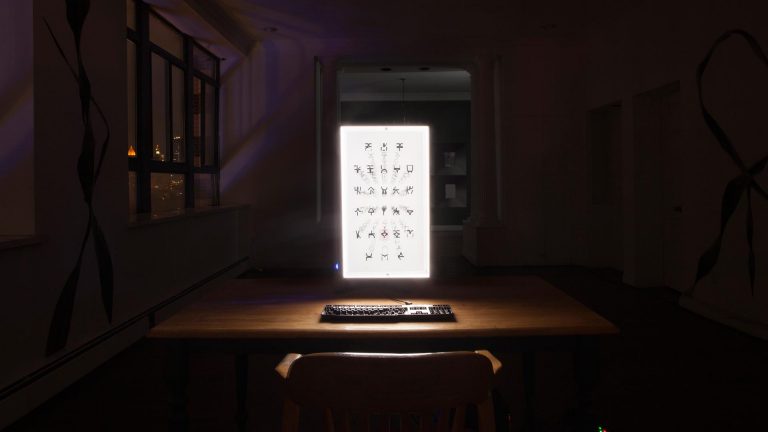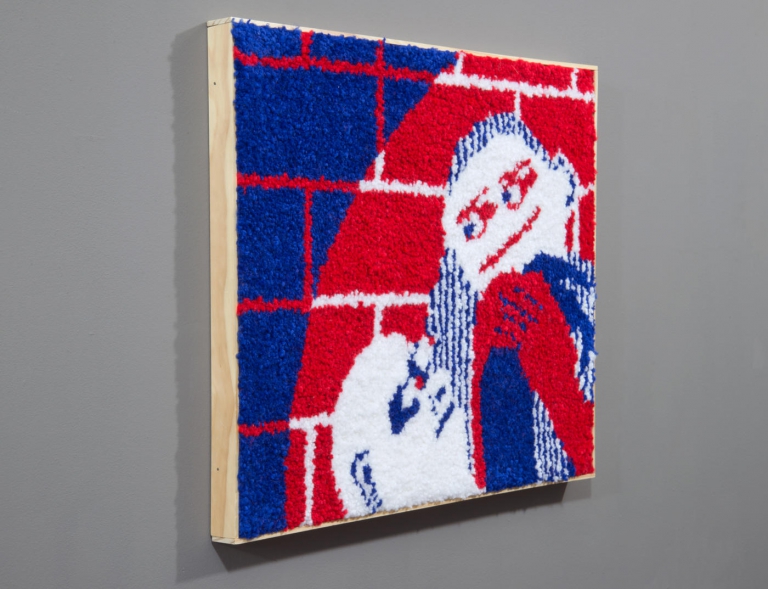Artist: Ragna Bley
Exhibition title: Pine Pitch
Venue: HESTER, New York, US
Date: April 29 – May 29, 2016
Photography: all images copyright and courtesy of the artist and HESTER, New York
Ragna Bley says that collective Swedish memory connects 1986, the year in which she was born, to the Chernoybl reactor meltdown that leaked radioactivity through the Baltic and across Europe. The wind was blowing from the south-east that day, and since no information came from the Soviets, the radioactive leak was, at least for a while, thought to come from the nuclear power-plant station in Forsmark, located just north of Stockholm by the Baltic sea. That theory was rather quickly dismissed when they realised that the measured levels of radioactivity afflicting the people inside the power plant were lower than those measured in the people coming from the outside and in. I wonder if contamination is not always directional and much less chronological.
Pale, grainy pinks meet lofty purples. At once faded and iridescent, glow Ragna Bley’s paintings – their expansive contours, often caught in a lazy stretch or curl, appear to catch the glare of a toxic sun. “Everything is done, even subconsciously, from a flat point of view,” says Ron Nagle, whose surfaces – recalling suntan lotion and surfer’s sex-wax melted into the sand after a nuclear fallout – stem from a similar persuasion. In the point where Bley’s originate, however, our eyes have to adapt to a colder light, more the glare of a white night than the blaze of a California sun. Paint sprays cling to their thinnest threads while a haze of acrylic leaks like lava from the insinuation of soft apertures. What is the half-life of a Ragna Bley? How does one begin to calculate the decay time of cosmic contamination?
Half-life (t1⁄2) is the time required for the amount of something to fall to half its initial value. It is commonly used to describe radioactive decay, or any type of exponential or non-exponential decay. Ragna Bley’s paintings appear to catch things at their half-life point, still potent but only half their initial charge, dispersed and amalgamated with its surrounding they chose the lukewarm over the hot carefully moving forward while diminishing. For her first US solo exhibition, Pine Pitch, abstract shapes interlock only to be corrupted by soft spills of washed-out, watered down pours of paint. She allows her colours to ooze into their supports: five raw, stretched canvases. The unprimed fibers absorb the paint like a stain, making it part of its corporal identity, not a superficial addition.
Bley’s awkward, amoebic shapes tinted in kaleidoscopic colours are also reminiscent of the mineral specimens that line the halls of the Musée de Minéralogie in Paris, displays of the most outlandish geological formations, too vivid and bizarre to be of this world. They oscillate between the organic and the synthetic, evoking a hybrid being formed equally of the inside and the outside. Some of her paintings evoke the mineral agate, the banded formation of the mineral chalcedony built up in layers or sediments each infused with a different colour and charge.
Curiously, now almost thirty years to the day since the nuclear accident in Chernobyl, the physical properties of Cesium 137 haven’t changed. Scientists expected the ecological half-lives of radioactive isotopes to be shorter than their physical half-life as natural dispersion should help in reducing the amount of material through environmental factors. The reasons for the continuous charge remain unknown.
–Anna Gritz
Ragna Bley, Clicks and talk, 2016
Ragna Bley, Clicks and talk, 2016 (detail)
Ragna Bley, Robber’s robber, 2016
Ragna Bley, Robber’s robber, 2016 (detail)
Ragna Bley, Inter-waver, 2016
Ragna Bley, Two chord wake, 2016
Ragna Bley, Two chord wake, 2016 (detail)
Ragna Bley, Clove hitch, 2016
Ragna Bley, Clove hitch, 2016 (detail)




















